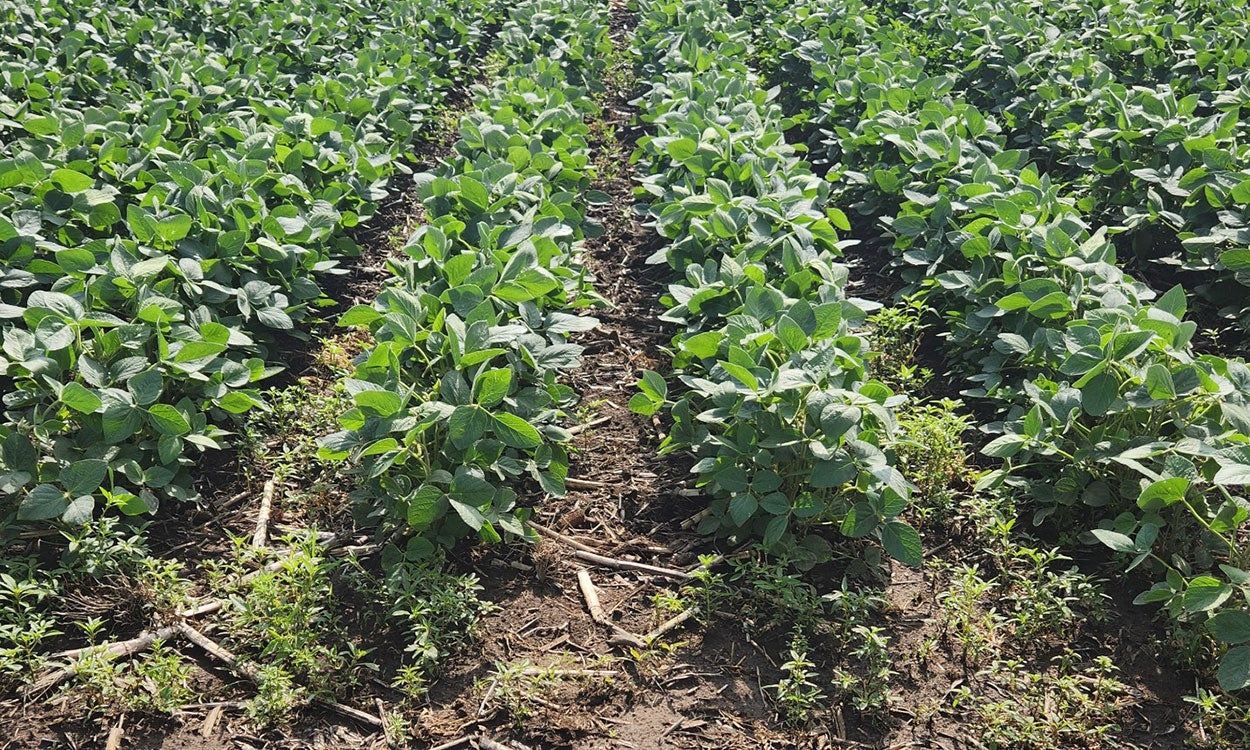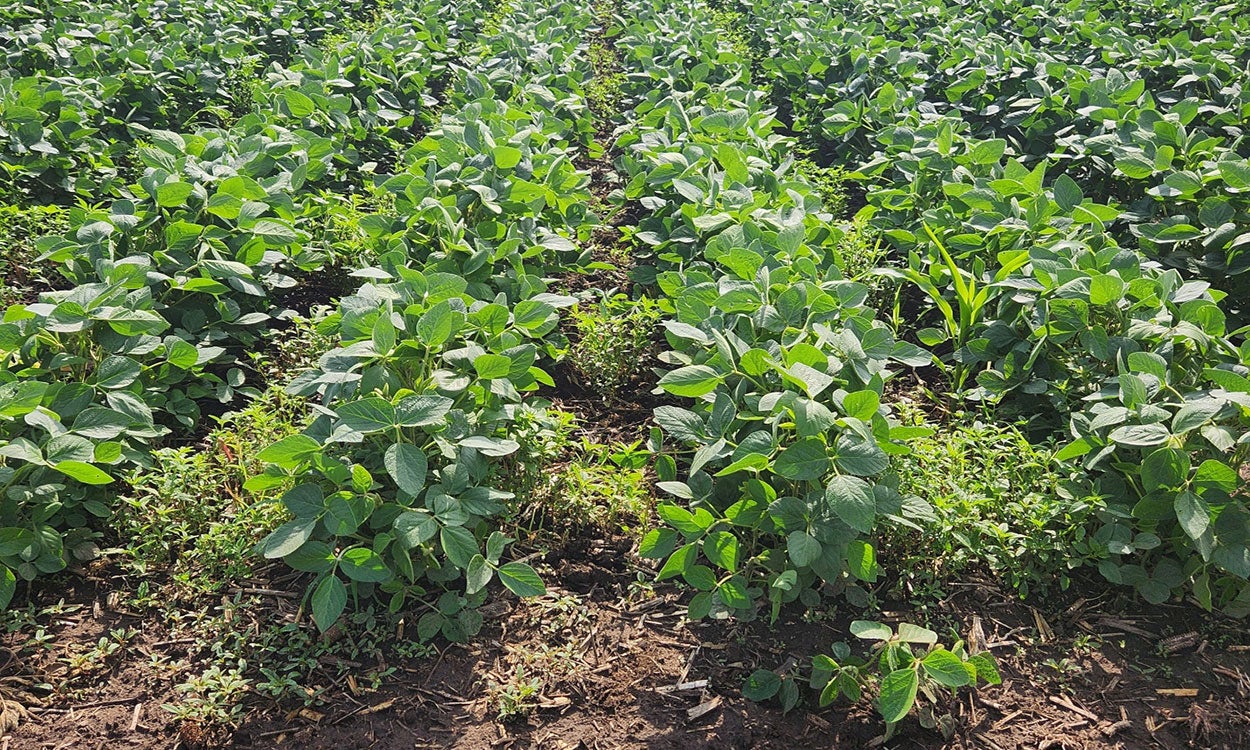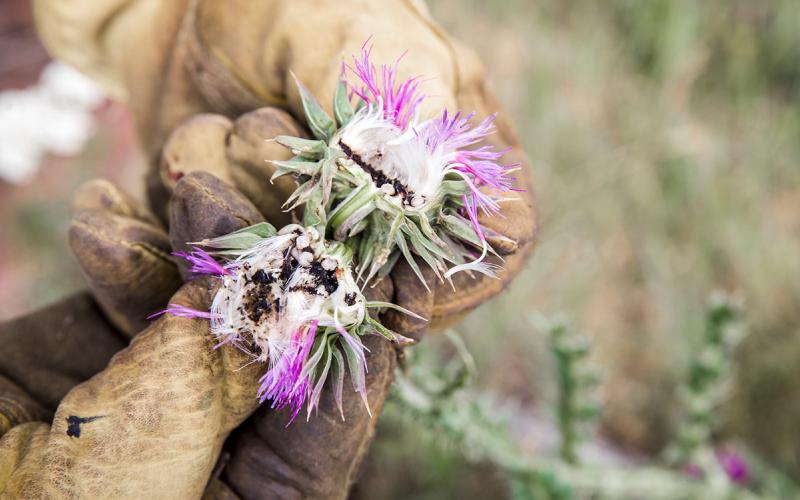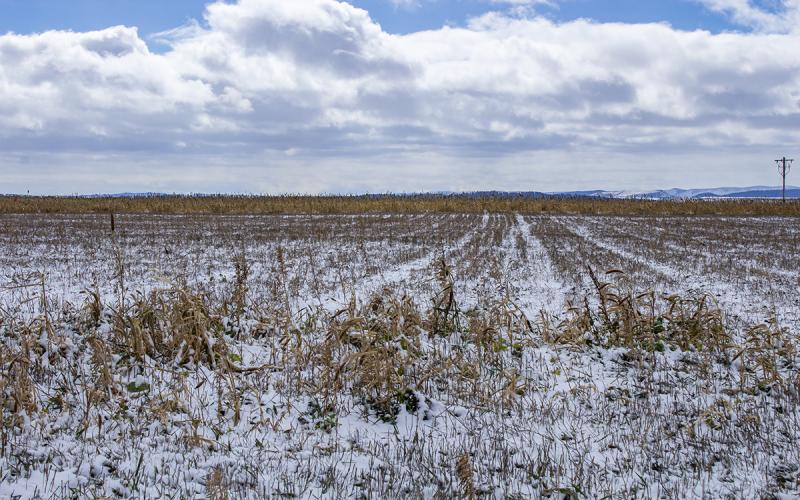Preemergence herbicides need at least a half-inch of rain within seven days after application to move the herbicide into the soil layer where weed seeds are actively germinating. This year many fields that were treated with a preemergence herbicide did not receive a half-inch of rain within twenty-one days after application. The realized result was poor weed control, and many concluded that the application was a complete loss. Despite the poor control realized early in the season, the preemergence herbicide likely still provided value that may not be readily realized at a field-scale level.
Research Plot Findings
Below is a depiction of two small research plots (four-rows by fifty feet long). One plot (Figure 1) had preemergence herbicide applied at planting, while the other plot did not (Figure 2). These plots did not receive more than a half-inch of rain after the preemergence herbicide application within a twenty-one day span, but adequate rainfall (~1.5 inches) occurred before the postemergence herbicide application. Both plots were treated with the same postemergence herbicide, and photographs of the plots were taken twenty-one days after the postemergence herbicide application. While the postemergence herbicide application provided similar control on the treated weeds, there are obviously less later-emerging weeds in the plot with preemergence herbicide application (Figure 1) compared to the plot without (Figure 2).
With Preemergence Herbicide

Without Preemergence Herbicide

This depiction of the two plots highlights the fact that the preemergence herbicide does not simply “disappear” if conditions are dry after application, but it can still provide weed control later in the season. While later-germinating weeds do not always result in a direct yield loss, controlling these weeds will improve harvest efficiency and reduce the amount seeds returning to the soil that will have to be controlled in subsequent growing seasons. Preemergence herbicides should still be an essential component of weed management, despite forecasted or unknowingly adverse environmental conditions.


